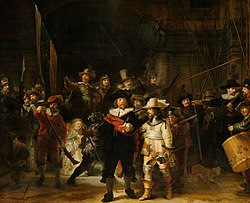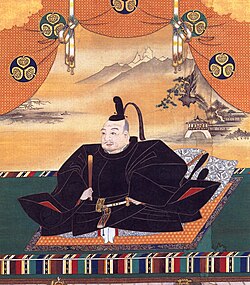| Millennia |
|---|
| 2nd millennium |
| Centuries |
| Timelines |
| State leaders |
| Decades |
| Categories: |
| Births – Deaths Establishments – Disestablishments |
The 17th century lasted from January 1, 1601 (represented by the Roman numerals MDCI), to December 31, 1700 (MDCC).
Contents
- Events
- 1601–1650
- 1651–1700
- Gallery
- Inventions, discoveries, introductions
- References
- Further reading
- Focus on Europe
- External links
It falls into the early modern period of Europe and in that continent (whose impact on the world was increasing) was characterized by the Baroque cultural movement, the latter part of the Spanish Golden Age, the Dutch Golden Age, [1] the French Grand Siècle dominated by Louis XIV, the Scientific Revolution, the world's first public company and megacorporation known as the Dutch East India Company, and according to some historians, the General Crisis.
From the mid-17th century, European politics were increasingly dominated by the Kingdom of France of Louis XIV, where royal power was solidified domestically in the civil war of the Fronde. The semi-feudal territorial French nobility was weakened and subjugated to the power of an absolute monarchy through the reinvention of the Palace of Versailles from a hunting lodge to a gilded prison, in which a greatly expanded royal court could be more easily kept under surveillance. With domestic peace assured, Louis XIV caused the borders of France to be expanded. It was during this century that the English monarch became increasingly involved in conflicts with the Parliament - this would culminate in the English civil war and an end to the dominance of the English monarchy.

By the end of the century, Europeans were masters of logarithms, electricity, the telescope and microscope, calculus, universal gravitation, Newton's Laws of Motion, air pressure, and calculating machines due to the work of the first scientists of the Scientific Revolution, including Galileo Galilei, Johannes Kepler, René Descartes, Pierre Fermat, Blaise Pascal, Robert Boyle, Christiaan Huygens, Antonie van Leeuwenhoek, Robert Hooke, Isaac Newton, and Gottfried Wilhelm Leibniz. It was also a period of development of culture in general (especially theater, music, visual arts and philosophy). Some of the greatest inventions took place in this century.
It was during this period that the European colonization of the Americas began in earnest, including the exploitation of the silver deposits, which resulted in bouts of inflation as wealth was drawn into Europe. [2] Also during this period, there would be a more intense European presence in Southeast Asia and East Asia (such as the colonization of Taiwan). These foreign elements would contribute to a revolution in Ayutthaya. The Mataram Sultanate and the Aceh Sultanate would be the major powers of the region, especially during the first half of the century. [2]
In the Islamic world, the gunpowder empires – the Ottoman, Safavid, and Mughal – grew in strength as well. The southern half of India would see the decline of the Deccan Sultanates and extinction of the Vijayanagara Empire. The Dutch would colonize Ceylon and endure hostilities with Kandy. The end of the 17th century saw the first major surrender of Ottoman territory in Europe when the Treaty of Karlowitz ceded most of Hungary to the Habsburgs in 1699.
In Japan, Tokugawa Ieyasu established the Tokugawa shogunate at the beginning of the century, beginning the Edo period; the isolationist Sakoku policy began in the 1630s and lasted until the 19th century. In China, the collapsing Ming dynasty was challenged by a series of conquests led by the Manchu warlord Nurhaci, which were consolidated by his son Hong Taiji and finally consummated by his grandson, the Shunzhi Emperor, founder of the Qing dynasty. [3] Qing China spent decades of this century with economic problems (results of civil wars between the Qing and former Ming dynasty loyalists), only recovering well at the end of the century.
The greatest military conflicts of the century were the Thirty Years' War, [4] Dutch–Portuguese War, [5] the Great Turkish War, the Nine Years' War, Mughal–Safavid Wars, and the Qing annexation of the Ming.




















